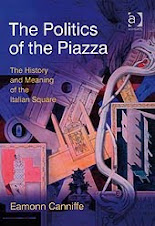
"... Semele landed on the grass-covered Piazza of the once superb Torcello. Here indeed she found proof upon proof of time's vicissitudes. Could this unpeopled waste, approached by a stagnant canal hardly restrained within its crumbling banks; these melancholy fever-stricken gardens without cultivators; this group of churches without worshippers, have ever been populous, rich, and magnificent, radiant with marble palaces, the new Altinum, rival of the old? ... ... Yes! This mockery of a Piazza, glaring forth its poverty and neglect, was once the centre of a rich and flourishing city, existing from a remote period, as the old Venetian, Lombard, Hunnish, Roman, and Grecian coins, frequently found beneath the soil, attest. ... ... But, alas! owing to the changed course of the waters of the river Sile, fever was produced in this once favoured spot; and then little by little the inhabitants decreased; so in time it ceased to be a Bishop's see, the monasteries were dissolved or transferred elsewhere, and thus by easy gradations it descended to its lamentable state of present perdition – its handful of cottages, its fifty or sixty denizens. And there in the Piazza, in front of a barn and granary, once a loggetta, from whence were proclaimed the laws of the Republic and the Municipality, probably the remains of the palace of the Podestà, Semele saw a rude stone chair, popularly called "the Chair of Attila", whence the early tribunes used to minister justice. She paused before the two churches, the Duomo and Santa Fosca, each of surpassing interest in its way, and carrying the observer back to the remotest ages of Christian architecture."
John Davies Mereweather Semele; or the Spirit of Beauty : A Venetian Tale (Rivingtons, London 1867)


No comments:
Post a Comment